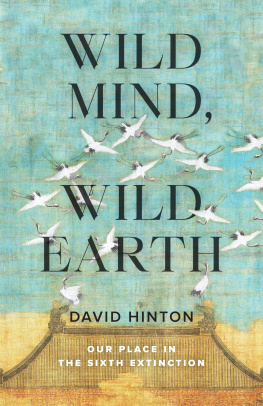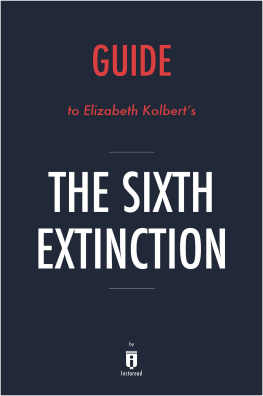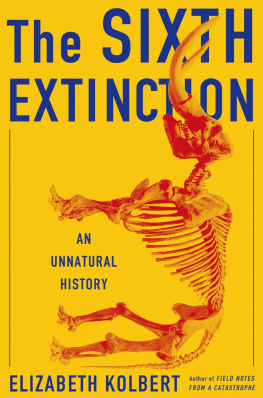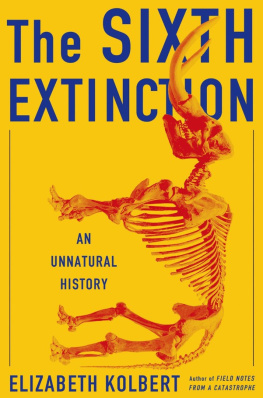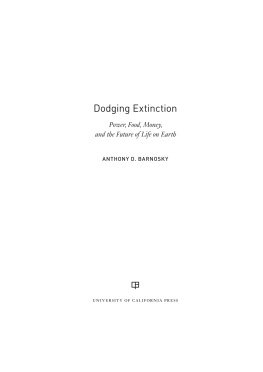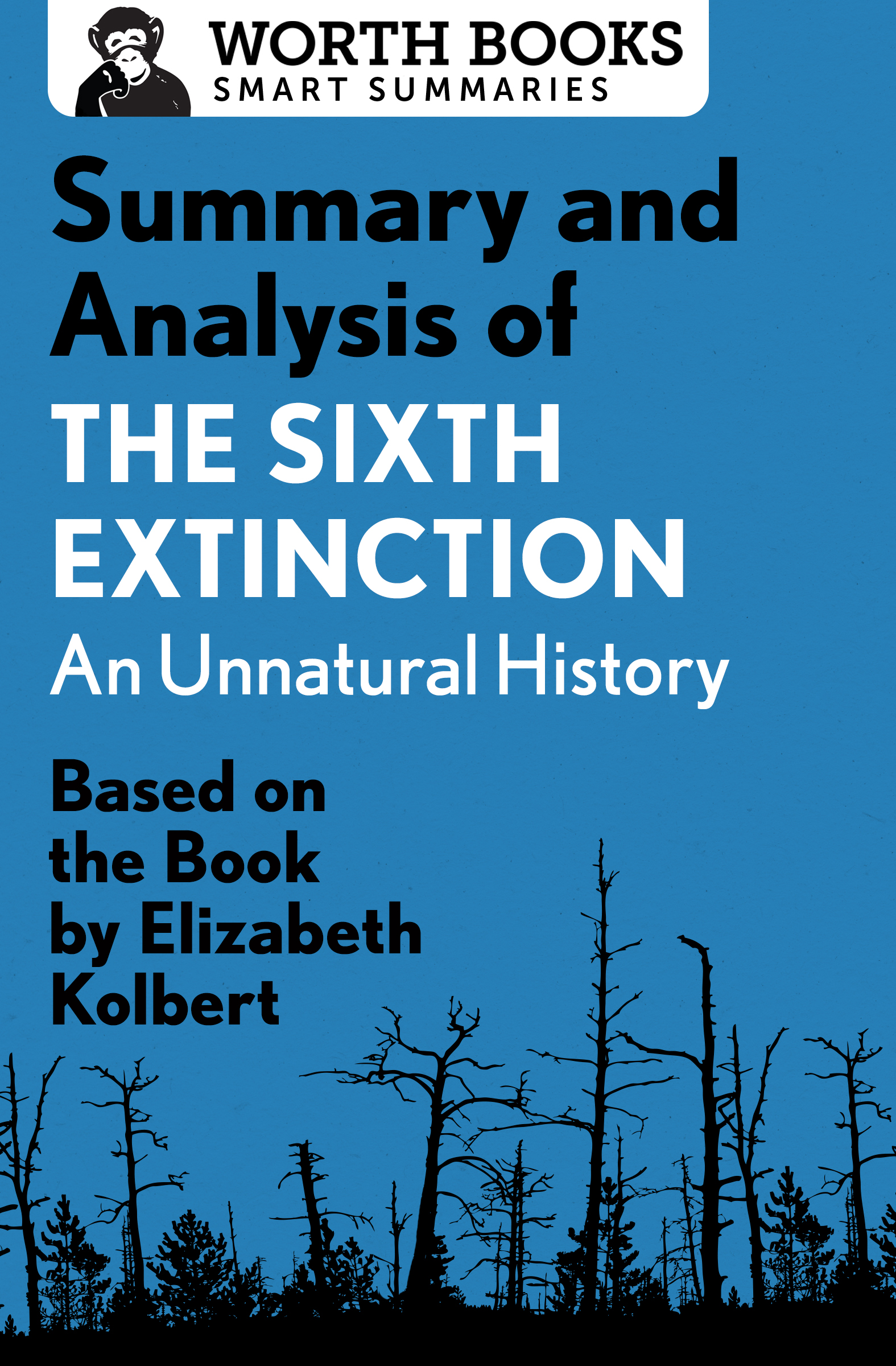Summary and Analysis of
The Sixth Extinction
An Unnatural History
Based on the Book by Elizabeth Kolbert

Contents
Context
Elizabeth Kolbert travels the world to meet with scientists researching the ecological impact of human activity. As a staff writer for the New Yorker , Kolbert first wrote about humanitys role in the extinction of Panamas golden frog in 2009.
Intended for the general reader, The Sixth Extinction serves as an urgent alarm about how the effects of man-made climate change and other outcomes of global trade and human activity are moving at an unstoppable pace. Kolbert synthesizes troves of research and historical anecdotes to wake up her readers to the unintentional consequences of our behaviors, from unprecedented carbon emissions and industrial agriculture to invasive species and overexploitation. Since the publication of Rachel Carsons Silent Spring raised awareness of the ecological damage wrought by DDT, studies continue to show that the delicate balance of life on earth is nearing a point of no return. As decades keep passing with worsening global conditions, Kolbert aims to reframe these issues through the catastrophic lens they deserve.
Overview
We are living through one of the most unique events in earths history, significant enough to count among our planets rarest occurrences over the past 450 million years. Interestingly, we humans are causing this eventa mass extinction, the sixth of its kind. Every species on the planet has evolved over millennia in order to thrive in its natural environment alongside a host of other species. However, human activity from the Ice Age, through the Industrial Revolution, and up to today has created a set of highly unnatural global circumstances. Drawing on the work of numerous scientists, Elizabeth Kolbert presents thirteen species that have been directly impacted by an array of unintended, yet catastrophic, events.
Humans are truly changing the shape of the world. Modern global trade and travel have allowed for flora and fauna from all corners of the world to be rearranged within the biosphere, a process resulting in a New Pangaea. Unfortunately, just as Old World diseases infected indigenous New World populations, invasive species are dominating their adopted ecosystems and destabilizing environmental equilibriums. Among the victims of this New Pangaea are Central Americas golden frog, along with all the worlds amphibians, which face near extinction due to an invasive species of fungus spread by global trade. Similarly, North Americas little brown bats are infected with a human-spread fungus that interrupts hibernation and results in death.
As humans have dotted the globe with roads, dams, and pipelines, populations of species have been separated. This phenomenon has disrupted the local habitat of army ants in the Andes Amazon, which supports up to three hundred other species in the rainforest, setting the stage for a catastrophic domino effect. On the other side of the world, the Sumatran rhino is on the brink of extinction due to the market value of exotic woods logged from Southeast Asian forests. As loggers enter the forest and alter the natural habitat of the rhino, the animals are unable to mate and recolonize.
Most alarmingly, the planets coral reefs and tropical rainforests are in grave danger as the burning of fossil fuels continues unabated, emitting enough carbon dioxide to drastically change the atmosphere and global temperatures. Coral reefs are especially susceptible to the increase in atmospheric carbon levels. As CO is absorbed into the ocean, the pH decreases and prevents life-sustaining coral from calcifying and growing. While plants absorb CO to generate photosynthesis, the accompanying temperature rise is too disruptive to the environment for most plant species to survive, especially in temperamental rainforests. These two ecological support structurescoral reefs and rainforestsharbor hundreds of thousands of species and are just as vulnerable to climate change as cold-climate species.
The Sixth Extinction focuses merely on the visible tip of the melting iceberg. Hundreds of thousands of species face extinction in the coming century, and while we are starting to wake up to the consequences of our behavior, hope for an improved situation is hard to come by. Kolbert argues the global economy must be drastically altered to stave off genuine devastation. While she doesnt anticipate such changes being made, she chooses to honor the scientists and scholars taking responsibility and trying to save species who are helpless against mankind.
Summary
Prologue
About two hundred thousand years ago, a new, not yet named species appeared on the earth in Africa. Although not particularly swift or strong, they were resourceful. Before long, they had crossed rivers, mountain ranges, and oceans without difficulty, adapting to various climates through innovation. More than one hundred thousand years passed. They traveled to faraway lands, bringing a host of germs and animals with them. The ecosystem that greeted them was forced to adapt, but often it was unable to, and other species died. Another one thousand years passed and this species, human beings, inhabited every corner of the globe. They discovered how to use energy from deep in the ground, which alters the atmosphere and the climate. Some animals adjusted by movingup into the mountains, into deeper water, to the polesbut thousands of species were unable to survive. No other animal has altered life on earth in the way humans have.
The planet has experienced five other periods of enormous change that resulted in mass extinctions. This is the story of the sixth. In the first part of her book, Kolbert discusses creatures that are already extinct and the history that led to our understanding of these mass extinctions. The second part of the book is concerned with the present, and looks at the catastrophic changes happening in the rainforests, the reefs, the mountains, and even our own backyards.
Chapter I: The Sixth Extinction
Kolbert dedicates her first chapter to the modern plight of the golden frog ( Atelopes zeteki ). Once abundant in Panamas rainforests, golden frogs now serve as the figurehead for the worldwide endangerment of all amphibians. In 2002, scientists, researchers, and local Panamanians noticed a drastic decline in golden frogs, and by 2004, efforts were underway to preserve the existing population in captivity and to hunt out the cause of their disappearance. Amphibians survived millions of years, dating back to before the dinosaurs, across virtually every habitat, from rainforest to desert to the Arctic Circle. However, their recent disappearance has occurred irrespective of geography and across nearly all species.
As the title suggests, there have been five mass extinctions, the first being 450 million years ago. At the center of the present sixth extinction is the exceptional fact that it is unintentionally caused by one species: us. Kolbert reveals the mysterious amphibian-killer to be a microscopic fungus called Bd, which disrupts normal functioning of the creatures skin, resulting in the equivalent of cardiac arrest. Human activity is accountable for the global distribution of Bd, which is now so widespread across the planet that scientists believe it is impossible to repopulate the golden frog and other threatened amphibians in the wild.
Need to Know: The Sixth Extinction opens with the recent and rapid death of amphibians, which is caused by human activity and is occurring at a rate forty-five thousand times higher than the baseline. Once thought nearly impervious to extinction, amphibians are now the worlds most endangered class of animals.








